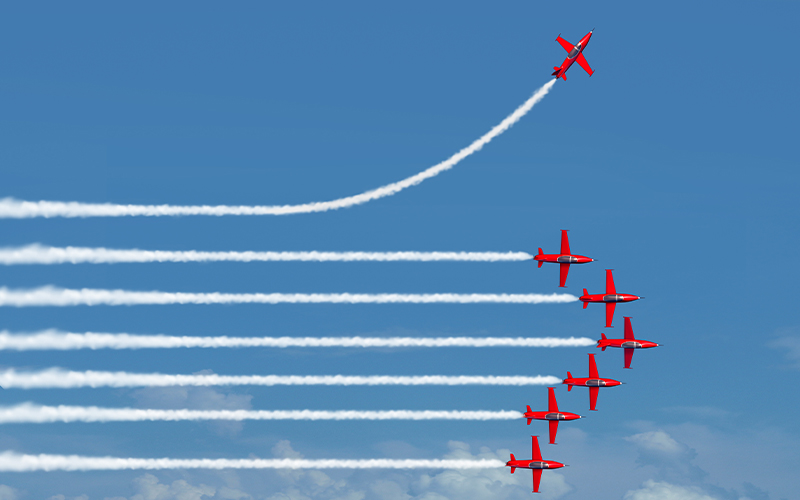Corporate
Through the looking glass: into the Web3-verse
When you woke up this morning, it is likely that one of the first things you reached for was your phone, whether to scroll through the news, catch up on your messages or simply check the time. This reminds me of a time when things were very different. In my childhood, a telephone was not something you got easily. You needed to apply for one and wait in the queue till it was assigned to you. Sometimes, for months, or even years.
Today, it’s hard to imagine that such a scenario existed, when the world wasn’t, literally, at your fingertips. Our phones now serve multiple purposes, from making and receiving calls, their original ‘calling’ (tongue firmly in cheek!), listening to music, ordering food or groceries, booking your transport, checking emails, taking photos, storing phone numbers, and the list goes on as every day there seems to be more that you can do with your phone.
The telephone has evolved from its humble and simple beginnings as a rather clunky part of your furniture to the sleek, modern all-in-one device that you hold in your hand. The ‘World Wide Web (www)’ that we have accepted as an intrinsic part of our lives has also evolved, as technology and connectivity improved. It started becoming more accessible in the early 1990s. The web initially consisted of simple content that was primarily text-based. This worked well, considering that, in those days, you depended on a dial-up connection with extremely limited speeds to access the web. Patience was a virtue that you had to practice. Some of the popular websites that come to mind are Yahoo and AOL, which made news and financial information easily available to us.
In the early noughties, there was a move to user-generated content as social media platforms such as Orkut, MySpace and Facebook gained popularity. These platforms provided us with a way to connect and share our news, views and updates with friends and family from across the globe. The upgrade from slow dial-up to high-speed broadband options played a key role too. This brings us to the present, when we have high-speed networks not only for computers but also on our phones. Information and data are available at the click of a button or even with just voice commands or requests. It makes you wonder, what could be next.
The Web - Reloaded
We are now at the cusp of the next big change – Web3 – which is envisioned to be a decentralised system, built, operated, and owned by its users. Reports from earlier this year say that the global Web3 market is expected to see phenomenal compound annual growth of 67% in the next few years, from 5 trillion dollars this year to almost 40 trillion in 2025. Blockchain technology, smart/intelligent contracts, Decentralised Finance (DeFi), Non-Fungible Tokens (NFTs), and metaverses are hailed as the inevitable disruptions required to move the web forward into the future.
Just as the current mobile phones are a far cry from the initial vision of Alexander Graham Bell who was awarded the first telephone patent, Web3 will be very different from the web that was invented by Sir Tim Berners-Lee.
As with anything new, there are several mountains that need to be scaled along the way. Web3 developers are working on improving aspects such as:
User experience: Users currently enjoy easy access to the web. Graphical user interfaces have been developed and improved to the extent that users can seamlessly interact with the interface to accomplish what they set out to do. The Web3 user experience, however, leaves a lot to be desired. Users are yet to be able to easily access Web3 and intuitively engage with it.
Data privacy and security: While Web3 gives users transparency and connectivity, the other side of the coin is to ensure that the privacy and security of data remain uncompromised. Since the control will be decentralised, a proper system of checks and balances will have to be built to keep data secure.
Environmental impact: Another aspect that Web3 is struggling to address is the sheer amount of energy it uses as decentralised networks use complex infrastructure with high energy needs. Efforts are being made to make Web3 sustainable and eco-friendly.
Compatibility and scalability: The decentralised nature of Web3 brings with it the challenge of compatibility issues between the various blockchains and this becomes a natural stumbling block to the scalability of the technology.
Web3 advocates are hard at work to iron out the various complex challenges that currently stand in the way of its widespread adoption. Slowly but surely, solutions are being found to the obstacles. The push towards Web3 is gradually gathering momentum as many countries plan to invest in research and adoption of the technology in the near future. Additionally, research shows that 88% of companies are already exploring new web technologies and expanding how the web works. All things considered, the future of Web3 looks bright.
Soon, the vision of Web3 – a decentralised system, built, operated, and owned by its users – could be a reality.
This article was first published on Business Insider






